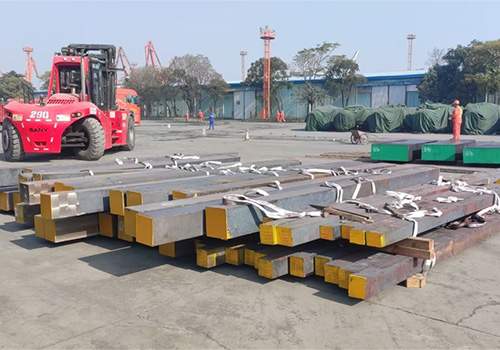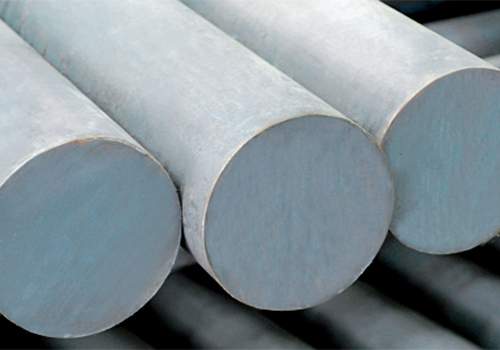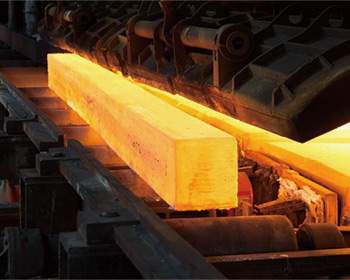
Top Applications of 1020 Low Carbon Steel
Table of Contents
Introduction

1020 Low Carbon Steel, known for its exceptional balance of strength and ductility, is a versatile material widely used across various industries. With a carbon content of approximately 0.2%, this steel grade offers a range of benefits that make it suitable for a multitude of applications. This comprehensive guide will explore the top applications of 1020 low carbon steel, highlighting its unique properties and contributions to different sectors.
Understanding 1020 Low Carbon Steel
What is 1020 Low Carbon Steel?
1020 Low Carbon Steel is a type of mild steel that contains a low percentage of carbon, around 0.2%. This low carbon content gives it excellent formability and weldability, making it a popular choice for many manufacturing processes.
Key Features of 1020 Low Carbon Steel
- Ductility: The low carbon content ensures the steel can be bent, stretched, or formed without breaking.
- Weldability: It is easily welded using most common welding techniques, making it suitable for a wide range of fabrication processes.
- Machinability: This steel grade is relatively easy to machine, allowing for precision components and intricate designs.
- Cost-Effectiveness: As a mild steel, 1020 is more affordable than many specialty steels, making it a cost-effective choice for many applications.
Applications of 1020 Low Carbon Steel

Automotive Industry
The automotive industry relies heavily on 1020 low carbon steel for various components, including:
- Body Panels: Due to its formability, 1020 steel is ideal for stamping body panels and other automotive parts.
- Chassis Components: The strength and ductility of 1020 steel make it suitable for chassis and frame parts.
Construction and Infrastructure
In construction, 1020 low carbon steel is utilized in:
- Reinforcing Bars (Rebar): For concrete structures, 1020 steel is used as rebar to provide tensile strength to the concrete.
- Structural Beams and Columns: In building construction, 1020 steel is often used for structural support beams and columns.
Agricultural Equipment
The agricultural sector uses 1020 low carbon steel for:
- Implements and Tools: For plows, cultivators, and other farming implements that require durability and resistance to wear.
- Machine Frames: In the fabrication of tractors and other heavy machinery where a combination of strength and flexibility is needed.
Furniture Manufacturing
In furniture production, 1020 low carbon steel is employed for:
- Structural Components: For the frames of chairs, beds, and other furniture that require a balance of strength and aesthetic appeal.
- Decorative Elements: Due to its machinability and weldability, 1020 steel is used for decorative elements and accents in high-end furniture.
Mechanical and Industrial Equipment
Mechanical and industrial equipment often incorporate 1020 low carbon steel in:
- Gears and Shafts: For applications where parts need to withstand torsional stress and require precise machining.
- Bearings and Pulleys: The ductility and strength of 1020 steel make it suitable for components that experience rotational and shear forces.
1020 Low Carbon Steel Specifications
| Specification | Description | Importance |
|---|---|---|
| Carbon Content | Approximately 0.2% | Determines hardness and strength |
| Tensile Strength | Varies but typically up to 500 MPa | Affects the ability to withstand stress |
| Yield Strength | Generally around 240 MPa | Indicates the point of permanent deformation |
| Machinability | High | Facilitates the production of precision parts |
| Weldability | Excellent | Allows for various fabrication methods |
| Cost | Moderate | Provides a cost-effective solution |
Case Studies and Real-World Applications

1. Automotive Chassis Production
The 1020 low carbon steel is used in the production of automotive chassis due to its strength and ductility, ensuring safety and reliability in vehicles.
2. Construction Rebar for Concrete Structures
In construction, 1020 low carbon steel is used as rebar, providing the necessary tensile strength to concrete structures, ensuring their stability and longevity.
3. Agricultural Implements
The durability and resistance to wear of 1020 low carbon steel make it ideal for agricultural implements, contributing to the efficiency and longevity of farming equipment.
4. Furniture Frame Manufacturing
In furniture manufacturing, 1020 carbon steel is used for frames, providing both strength and the ability to create aesthetically pleasing designs.
5. Industrial Gears and Pulleys
The machinability and weldability of 1020 carbon steel make it a popular choice for gears, shafts, bearings, and pulleys in industrial equipment.
Conclusion
1020 Carbon Steel is a versatile and essential material in the manufacturing industry, offering a balance of strength, ductility, and cost-effectiveness. Its wide range of applications, from automotive and construction to agricultural equipment and furniture, demonstrates its importance in producing reliable and durable products. As technology continues to advance, the 1020 carbon steel will remain a key component in the manufacturing of various goods that require a combination of strength and workability.
FAQ
What is 1020 carbon steel?
1020 carbon steel is a type of mild steel with a carbon content of approximately 0.2%, known for its balance of strength and ductility.
What are the key features of 1020 carbon steel?
The key features include ductility, weldability, machinability, and cost-effectiveness.
What are the top applications of 1020 carbon steel?
Top applications include the automotive industry, construction and infrastructure, agricultural equipment, furniture manufacturing, and mechanical and industrial equipment.
What are the main specifications to consider when selecting 1020 carbon steel?
Main specifications include carbon content, tensile strength, yield strength, machinability, weldability, and cost.
How can 1020 carbon steel be used in the automotive industry?
In the automotive industry, 1020 carbon steel is used for chassis and frame parts, as well as suspension components, due to its strength and ductility.






